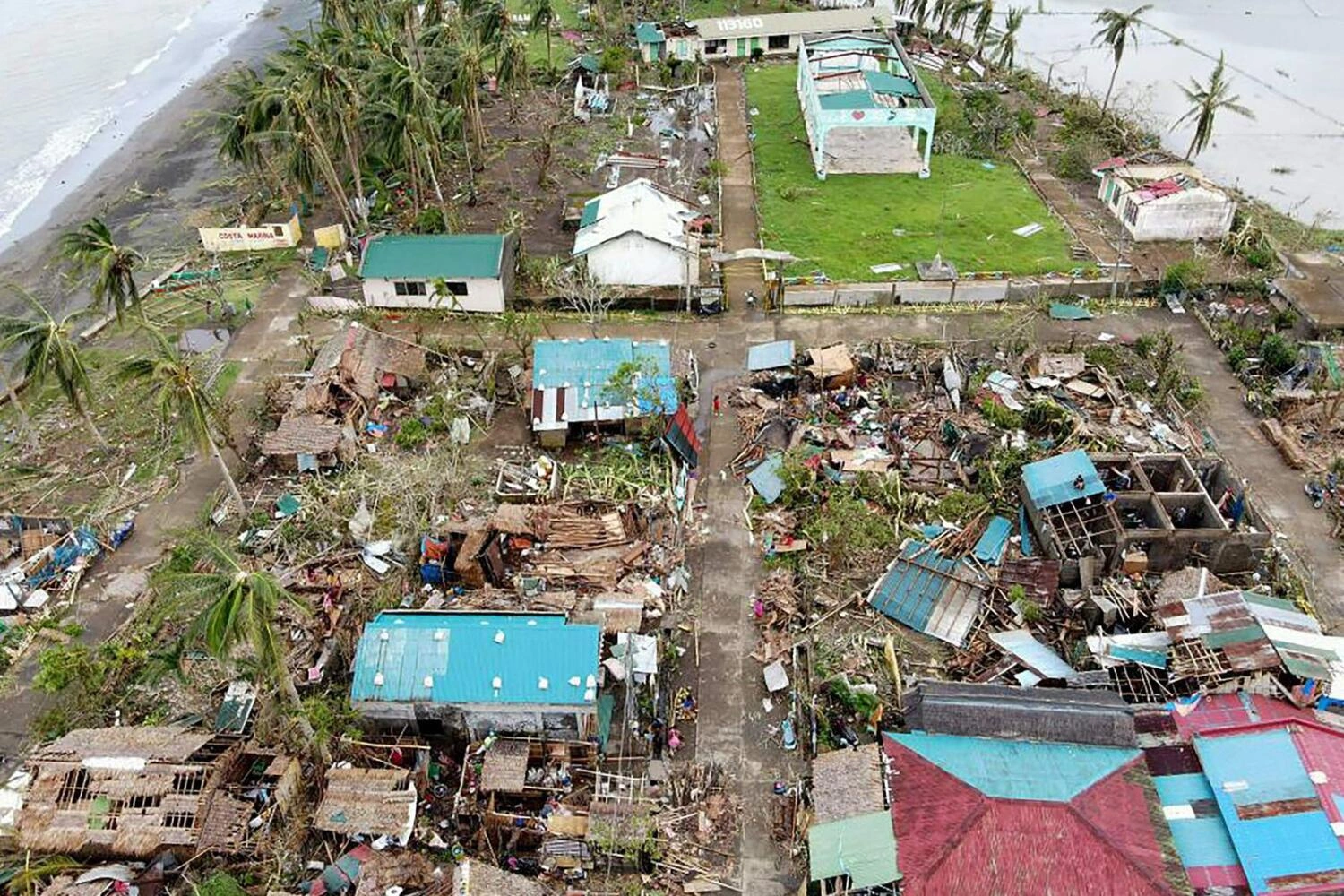Filipinos worked hard on Monday to clean up fallen trees and repair damaged homes after Typhoon Man-yi became the sixth major storm to hit the Philippines in just one month. The storm destroyed fragile houses, cut off power, and claimed at least eight lives.
The national weather agency had warned that Man-yi could cause “potentially catastrophic” damage. However, President Ferdinand Marcos shared some relief on Monday, saying it “wasn’t as bad as we feared.”
With wind speeds of up to 185 km/h (115 mph), Man-yi hit Catanduanes island late Saturday and Luzon, the country’s largest island, on Sunday afternoon. It uprooted trees, brought down power lines, destroyed wooden homes, and triggered landslides.
President Marcos referred to the typhoon as Pepito, its local name, and said in an official statement, “Though Pepito was strong, the impact wasn’t as bad as we feared.” He added that efforts are underway to rescue people in isolated areas and provide food and water to those displaced by the storm.
Lives Lost and Damage Reported
The typhoon claimed at least eight lives. Among them was a 79-year-old man in Camarines Norte who tragically died when his motorbike hit a power line. In Nueva Vizcaya, seven people lost their lives and three were injured when a landslide buried their house, said Kristine Falcon from the local disaster agency.
In Catanduanes province, power outages could last for months as many electricity poles were knocked down, according to Camille Gianan, the provincial information officer. “Catanduanes has been heavily damaged,” Gianan said. “We need food packs, hygiene kits, and construction materials. Most homes made of light materials were flattened, while even concrete houses had roofs, doors, and windows destroyed.”
In Aurora province, residents of Baler town started clearing roads and waterways of trees and debris. Disaster officer Neil Rojo explained that houses made of lighter materials were hit hard, and many roofs were blown away. “It was the fierce winds, not so much the heavy rain, that really scared us,” Rojo said.
As Man-yi crossed Luzon, it weakened and was downgraded to a severe tropical storm as it moved into the South China Sea toward Vietnam on Monday. Over a million Filipinos had fled their homes ahead of the storm, which came after a month of unusually intense weather.
In the past month, the Philippines has seen five major storms before Man-yi, resulting in at least 171 deaths, leaving thousands homeless, and destroying crops and livestock. The country experiences around 20 storms annually, but having so many in such a short time is rare.
This November also marked a unique weather pattern. Four storms developed simultaneously in the Pacific, a first since records began in 1951, according to Japan’s Meteorological Agency.
Climate Change’s Role
Experts warn that climate change is making storms stronger and more dangerous, leading to heavier rainfall, stronger winds, and more frequent flash floods. As the Philippines recovers from this latest disaster, the ongoing threat of extreme weather remains a pressing concern.









